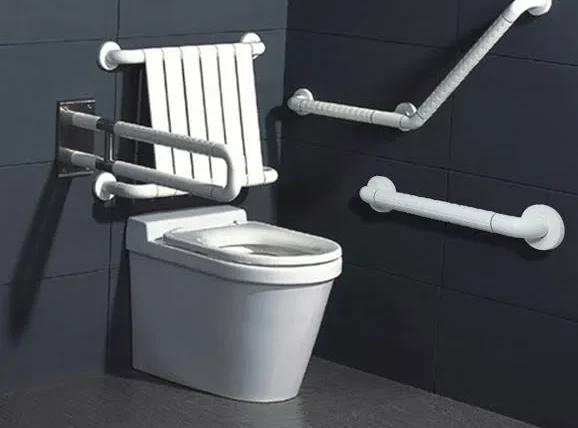
Creating a safe and accessible bathroom environment is essential for individuals with limited mobility, including seniors and people with disabilities. One of the most effective ways to enhance safety and independence in bathrooms is by installing handicap grab bars. These bars provide stability and support where slips and falls are most likely to occur—especially around the shower, toilet, and bathtub areas.
In this blog, we’ll explore everything you need to know about handicap grab bars, including their types, placement, benefits, and how they comply with safety standards.
Why Grab Bars Are Important
Grab bars are sturdy handrails designed to help individuals maintain balance, reduce fatigue while standing, and safely transition between sitting and standing. Bathrooms, with their slippery surfaces, pose significant risks—making grab bars an essential addition for fall prevention and support.
Types of Handicap Grab Bars for Bathrooms
1. Shower Grab Bars
Shower grab bars are installed inside the shower area to offer support while standing, washing, or transitioning in and out of the shower. These bars reduce the risk of slips on wet tiles and provide a secure grip in the most vulnerable spot of the bathroom.
2. Grab Bars for Shower Walls
Designed to be mounted horizontally, vertically, or diagonally, grab bars for shower walls come in different lengths and styles. Their correct positioning ensures users can safely enter, exit, and move within the shower space.
3. Bathroom Grab Bars for Elderly
Seniors often face reduced strength and balance, making bathroom grab bars for elderly individuals a crucial safety feature. These bars assist with daily routines and minimize the risk of injury.
4. Toilet Grab Bars
Getting on and off the toilet can be challenging for people with mobility limitations. Toilet grab bars, installed near or behind the toilet, provide firm support during this movement.
5. Grab Bars for Toilet Areas
In addition to wall-mounted bars, grab bars for toilet spaces may include foldable or swing-up options to maximize space and functionality.
ADA-Compliant Grab Bars
For public and commercial spaces, it’s important to follow ADA (Americans with Disabilities Act) guidelines. ADA grab bars ensure proper length, diameter, and placement to offer maximum safety and usability for all users. Installing ADA-compliant bars in home bathrooms can further enhance accessibility.
How to Choose the Best Grab Bars for Seniors
When selecting the best grab bars for seniors, consider these key features:
- Non-slip grip for better hold even with wet hands
- Stainless steel or corrosion-resistant materials for long-lasting durability
- Easy installation with secure wall anchoring
- Multiple size options to suit different bathroom areas
Proper Placement of Handicap Grab Bars
Correct placement is vital to ensure the effectiveness of grab bars. Common installation areas include:
- Vertically or diagonally inside showers for easy reach
- Horizontally near the toilet for push and pull support
- Along the bathtub edge for stability during entry and exit
Professional installation is recommended to ensure the bars are mounted securely into wall studs or with proper anchors.
Final Thoughts
Adding handicap grab bars to your bathroom is a smart step toward improving safety, independence, and peace of mind for seniors, individuals with disabilities, and anyone at risk of falling. From shower grab bars to toilet grab bars, each type plays a unique role in making the bathroom a safer space.
Whether you’re caring for a loved one or planning to age in place, investing in grab bars, especially the best grab bars for seniors, can make all the difference in daily comfort and safety.









